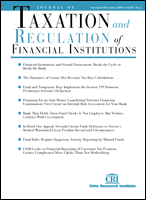Understanding the FDIC’s Safe Harbor for Securitizations by Insured Depository Institutions in Light of Recent Rule Changes
Author: Mitchell Birrittella.
Source: Volume 24, Number 04, March/April 2011 , pp.45-54(10)

< previous article |next article > |return to table of contents
Abstract:
In September 2010, the Board of the Federal Deposit Insurance Corporation (FDIC) adopted a final rule clarifying the circumstances under which the assets of a securitization or participation would be afforded a regulatory safe harbor from the FDIC’s repudiation power as a receiver or conservator of an insured depository institution (IDI). Failure to meet the safe harbor requirements could severely jeopardize the value of the securities issued by a securitization by permitting the FDIC, in the event of an IDI’s insolvency, to disrupt the cash flows that provide payments to securitization investors. Securitizations entered into on or after January 1, 2011, that comply with new incentive-aligning eligibility conditions and recently revised accounting rules for off-balance-sheet treatment will be afforded full protection of the FDIC’s repudiation safe harbor. Securitizations that meet such conditions but fail to achieve off-balance-sheet treatment are subject to limited protections. The final rule also provides for permanent grandfathering of certain securitizations entered into on or before December 31, 2010, without being subject to the new eligibility conditions.Keywords: FDIC repudiation power; 12 C.F.R. 360.6; repudiation safe-harbors; securitization; failed banks; Financial Accounting Standards No. 166; off-balance-sheet treatment
Affiliations:
1: New York Law School.